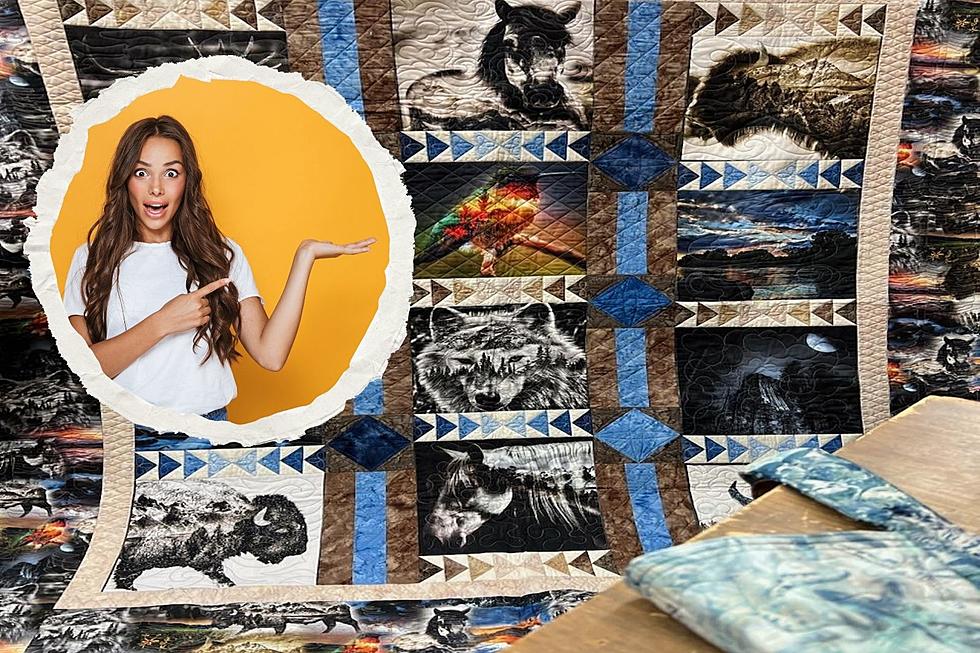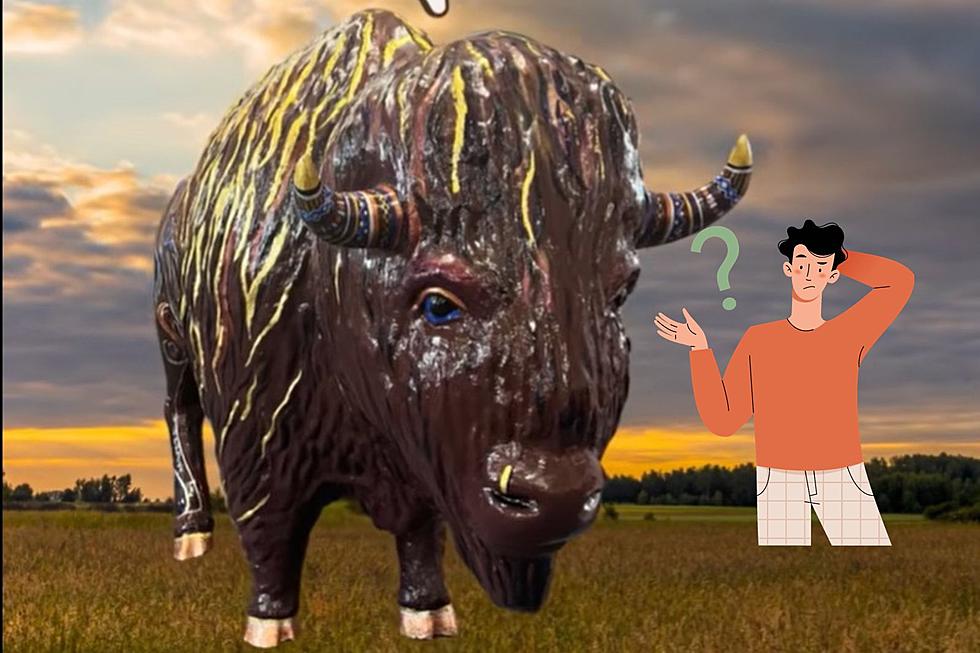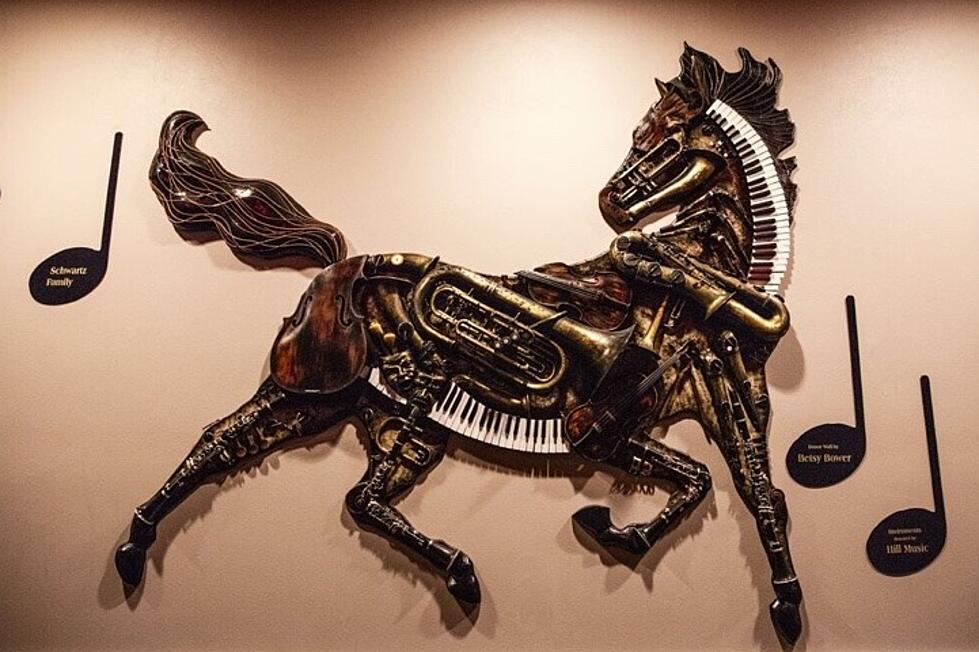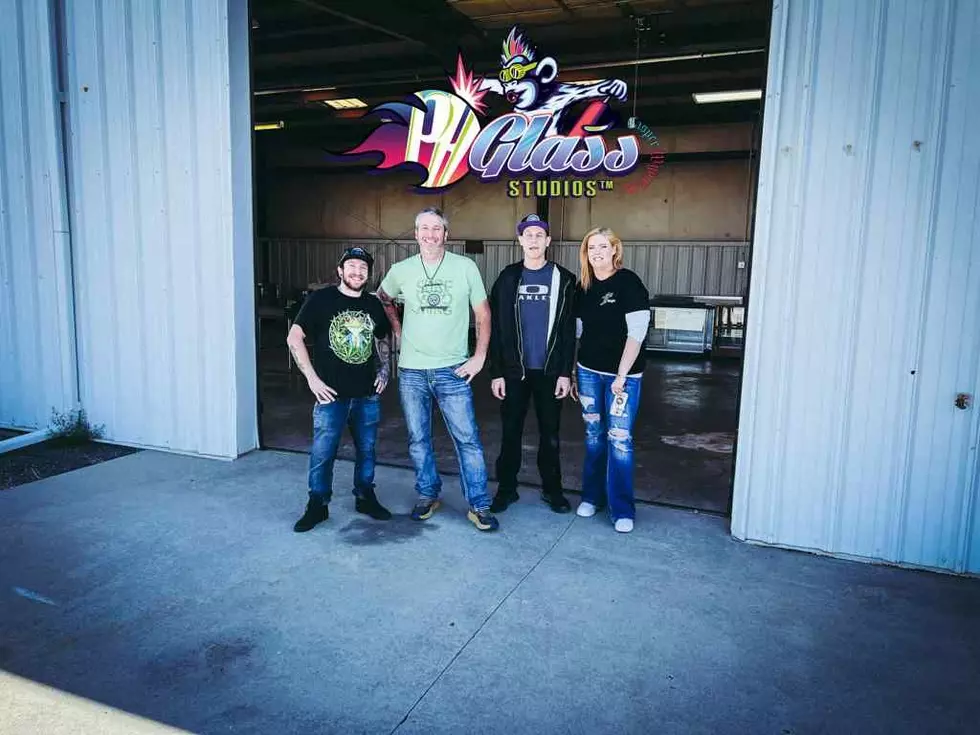
Casper Artist Showcasing Images of War in Ukraine at Scarlow’s Gallery, Donating Portion of Proceeds
Scarlow's Gallery, Art and Coffee is hosting a month-long exhibit by contemporary Casper artist Roy Uptain, throughout the month of February. The exhibit will feature paintings based on images from the ongoing war in Ukraine.

According to a release, "Uptain’s paintings explore the competing ideologies that create, circulate, and display images in times of conflict. Through his use of multiple perspectives (a war photographer’s lens, a military spy plane, a videogame screenshot, a cell phone photo), Uptain questions the unseen forces that shape public opinion, seeks ways to better understand our historical moment, and explores more authentic ways to bear witness to each other's experiences."
Uptain, like many artists, uses his art to try and understand the world around him. After looking around, and seeing the things that are happening in Ukraine, he did the only thing he could think of; he picked up a brush and started to paint. One painting led to another, and another, and another. And now, Uptain is presenting his work so that people can see, through his eyes and the eyes of others, what is happening in Ukraine. He wants people to talk, to think, to feel, to get angry, and more.
And isn't that what art is supposed to do? It's supposed to elicit feelings, either positive or negative. It's supposed to start conversations. It's supposed to make people feel and that's exactly what Uptain wants to do with his paintings.
Below is a brief interview with Uptain, where he explains what inspired his work, why he chose to present it in this format, what he wants audiences to take away from it, and more:
Q: What made you want to undertake this kind of project?
A: The artists I admire most are all good at the same thing––they take something familiar and present it in a way that shows, as William Blake put it, “a world in a grain of sand.”
When Russia invaded Ukraine last February, I began collecting images that seemed familiar at first but made me ask harder questions the longer I looked at them.
I began painting images of the conflict to better understand them. As I painted, I read plenty of articles and watched many Youtube videos about the war. But I also read some great books about processing images of suffering and conflict.
As I painted, I shared my experience and research with friends and family, which led to many helpful conversations––and a few hard ones.
Sharing my work made me realize that I wasn’t alone in trying to process my experience of bearing witness to the invasion of Ukraine. These global conflicts playing out in the fields and suburbs of Ukraine and our social media feeds bring shared experiences of hope, grief, confusion, and chaos that we must grapple with and process together.
Q: How has your time with the Army National Guard prepared you for this kind of work?
A: I don’t think I would’ve started painting images from the war in Ukraine without my training as a mass communications specialist for the Army National Guard. Basically, my job consisted of a combination of marketing, public relations, and straight-up propaganda.
I was constantly reminded in my oaths of service that as a member of the military, I was a servant to the American public. They paid for my training, the equipment I used, and my drill check each month.
But at the same time, they were my target audience. I was supposed to sell them on how awesome the Army was and how amazingly capable and efficient we were.
In the six years I served, I was never asked to create content about issues like service member mental health, PTSD, sexual harassment and assault, health risks of the job, or the ecological impact of our training missions.
The contradiction of being ordered by my commanders the misdirect the attention of people I was told to serve always gave me a funny feeling. It was the first time I consciously experienced what George Orwell termed doublethink: “to be conscious of complete truthfulness while telling carefully constructed lies.”
That realization forced me to take a closer look at how the images we see in the news media and on social media every day are created and circulated. It made me ask better questions about how organizations, like the US military, shape public opinion, especially about the global conflicts we participate in.
Q: What is the art of painting photographs? What’s the thrill of it?
A: Every artistic medium reaches a moment of crisis. Painting reached that moment during the 20th century when everyone decided that painting was dead since photography had replaced it. Now, with the creation of AI-generated art, it seems like photography will experience a similar crisis.
I like to imagine that I’m painting from a distant point in the future when all mediums have experienced their existential crisis, and they are all on equal footing––all equally relevant (or irrelevant).
So I upend how we typically experience the relationship between photography and painting. We’re constantly taking pictures of paintings to share on social media. What if making paintings of our iPhone photos was just as common?
Beyond the enjoyment I get from reversing the relationship between photography and painting, I also believe that the act of making something physical is still deeply important.
Painting forces me to slow down. It forces me to think about what I am painting for hours. It gives me space to breathe and to untangle the complex emotions I experience while looking at images of suffering caused by what seems to me to be an unnecessary war.
Q: What do you want people to think/feel/experience at your show?
A: A big part of being human is bearing witness to the lives of those around us. When we take time to see one another and listen to their stories, we are saying, “You matter to me. You are valuable. You are worth caring about.”
These days, remaining present and paying attention to each other feels harder than ever.
I want people to know that it's okay to feel a lot of mixed emotions when they see images of war from Ukraine. These images seem simple and familiar––they are anything but. It's okay to take the time to sort through your thoughts and feelings.
I want them to know that it's hard to continue caring and mourning over this tragedy, especially as the war approaches its second year with no end in sight. It's okay stop and breathe. It's okay to take a break. It's okay to look away.
I want them to know that they aren’t powerless to help. There are ways they can use their time, energy, or funds to aid Ukrainian refugees, Ukrainian medical personnel, and even the Ukrainian military in defending their homes. Attention and thoughtfulness are valuable resources too. Just a simple encouraging comment on a post by a Ukrainian about their experience can remind them that they are still worth caring about.
Q: Why did you choose Scarlows to present this work?
A: Claire Marlow and I are friends. When I told her about the work I was making, she was eager to see it. At first, we planned on putting up four or five pieces, but after looking at all the paintings together, it made sense to make it its own exhibit. Each painting asks similar questions but from a variety of perspectives. In that way, they speak to each other and become more meaningful as a result.
Is there anything else you would like to add?
A: Claire and I have both agreed to donate 20% of the sales of any paintings to United24, a global digital initiative founded by Ukrainian president Volodymyr Zelenskyy to raise funds and support Ukraine amid the Russian-Ukrainian war.
The exhibit will open on February 6 and will run through March 8 at Scarlow's Art and Coffee located at 122 W. 2nd Street in Downtown Casper.
Photos of Uptain's paintings can be seen below, as well as descriptions from the artist.
Casper Artist Showcasing Images of War in Ukraine at Scarlow's Gallery,
More From My Country 95.5









